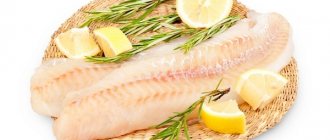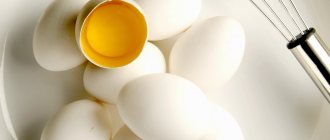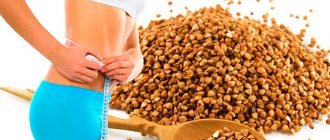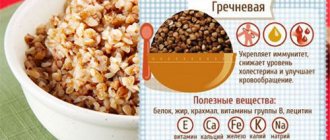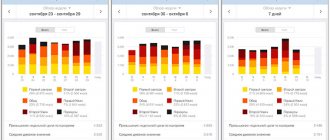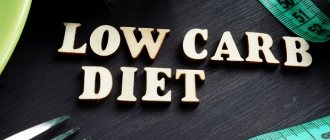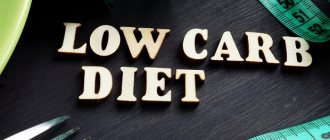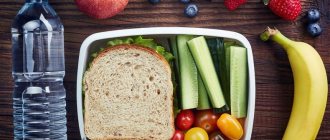The human body contains about two grams of zinc, which is distributed in the muscles, pancreas and liver. This small amount determines the production of more than 400 enzymes. Without zinc, protein synthesis, red blood cell production and normal functioning of the skeletal and muscular systems are impossible.
The trace element is inextricably linked with the hormonal system. It is necessary for the production of male hormones and sperm, and is responsible for the production of insulin, without which the pancreas cannot function and diabetes mellitus develops. With its direct participation, the formation of the hormone somatotropin or growth factor occurs, as well as corticotropin, the hormone of the adrenal glands.
Nika Tyutyunnikova, fitness trainer, nutritionist: “It has been scientifically proven that zinc deficiency disrupts immune defense: the growth and functioning of immune system cells and the production of antiviral interferon proteins decrease. This leads to poor resistance to infections, especially viral ones. Frequent illnesses, not only in childhood, are a reason to review the diet for zinc adequacy.”
Symptoms of Zinc Deficiency
Frequent acute respiratory infections are not the only warning sign. Zinc-rich foods should be included in the diet if:
- skin changes - rashes, dryness, slow wound healing;
- deterioration of hair condition - focal loss or discoloration;
- changes in the structure of the nails - fragility, transverse white grooves.
If external signs of deficiency are accompanied by other disorders, this is a reason to consult a doctor. The value of the microelement is so high that disturbances may affect the functioning of the brain, the hematopoietic system, and changes in the functioning of the genitourinary system.
External signs complement:
- changes in the perception of smells and tastes;
- loss of appetite;
- neurological disorders - causeless anxiety, loss of attention, trembling of limbs, changes in speech and gait;
- decreased performance at school, fatigue in children;
- disturbance of puberty in children, growth arrest;
- decreased visual acuity.
Symptoms of zinc deficiency are not specific; similar ones may be present with a deficiency of other microelements or diseases. Therefore, only a doctor should be involved in diagnosis and treatment. Products containing large quantities of zinc will help prevent such conditions, but will not get rid of the disease if it is present.
Interaction with other microelements and vitamins
Interacting with various elements, zinc is also absorbed differently. Some microelements increase the speed, while others, on the contrary, slow down the absorption time.
Substances that help zinc be absorbed better and faster:
- Foods that have a lot of protein are great for zinc bioavailability.
- The ideal combination of zinc with vitamin A, thanks to which the vitamin is better absorbed and zinc reaches its final goal faster.
- Vitamin B2 also increases the rate at which the body absorbs zinc.
- Zinc promotes better absorption of vitamin E.
- When consuming vitamin B6, less zinc is excreted from the body.
Drugs and substances that do not combine well with zinc:
- Tea, coffee and milk interfere with the good absorption of zinc.
- The same goes for salt and sugar, which slow down the rate of absorption.
- Aspirin and tetracycline are the culprits in removing zinc from the body.
- If zinc is consumed simultaneously with calcium and manganese, it is absorbed more slowly.
- Vitamin B9 interferes with the normal absorption of zinc.
- If a person consumes a lot of fiber, then the amount of absorbed zinc is reduced by 15-20%.
- It is believed that alcohol can remove trace elements from the body.
- When excess copper, lead and cadmium are present in the human body, zinc is slowly absorbed. This can result in a microelement deficiency.
- When zinc and iron are combined together, Fe will be poorly absorbed.
Zinc is an essential component that supports the reproductive, nervous and immune systems. If you daily consume foods that contain the most zinc, you may not need to use zinc-containing preparations separately.
Author: Julia Winters
Article design: Anna Vinnitskaya
At-risk groups
Zinc is a common trace element in food. With a varied diet, its deficiency is unlikely. But there are five groups of people who are at risk of developing a deficiency and its consequences.
People with gastrointestinal diseases
Zinc is absorbed in the small intestine. Diseases of the digestive system can worsen the already incomplete absorption of micronutrients from food. Surgery on the digestive organs and gastrointestinal diseases (ulcerative colitis, short bowel syndrome, Crohn's disease) contribute to this. Some conditions, such as chronic diarrhea, cause excessive loss of the microelement and lead to its deficiency.
Vegetarians
The body is able to absorb no more than one third of the zinc that comes from food. Its best sources are considered to be meat products, where the microelement is associated with protein. Vegetarians also get zinc by eating plant foods. But the degree of its absorption by the body is lower, does not exceed 20 percent. In addition, a large amount of fiber when eating plant foods and the content of microelements that bind zinc minimize its absorption. Most of the “antagonists” of the mineral are found in legumes and whole grains.
Pregnancy, breastfeeding
During pregnancy, the body needs a greater supply of the mineral, since part of it is absorbed by the fetus. If there is a lack of zinc in the diet, the body “sends” the required share to the baby, mercilessly destroying its own reserves. The same happens during lactation.
People with sickle cell disease
In children suffering from a hereditary disease of the hematopoietic system, the concentration of zinc in the plasma is 44 percent lower than in healthy people. This is due to an increased need for nutrients.
Alcoholics
The level of microelement in the body does not exceed 50 percent of the required level, which is determined by two factors: private consumption of ethanol and poor diet. The first practically blocks the absorption of zinc, the second prevents it from being obtained in sufficient quantities. With frequent consumption of ethanol, the absorption of zinc slows down.
Seeds
The seeds are a healthy addition to your diet and can help increase your zinc intake.
However, some seeds are better than others.
For example, 3 tablespoons (30 grams) of hemp seeds contain 31% and 43% of the RDA for zinc for men and women, respectively.
Other seeds that contain significant amounts of zinc include pumpkin, squash and sesame seeds (,).
In addition to increasing your zinc intake, the seeds contain fiber, healthy fats, vitamins and minerals, making them a great addition to your diet.
Including them as part of a healthy diet has also been linked to several health benefits, including lower cholesterol and blood pressure (, ).
To add flax, hemp, pumpkin or squash seeds to your diet, you can try adding them to salads, soups, yogurts or other foods.
Summary:
Some seeds, such as hemp seeds, pumpkin seeds, squash seeds, and sesame seeds, contain significant amounts of zinc. They are also a good source of fiber, healthy fats and vitamins, making them a healthy addition to your diet.
Daily norms
Nika Tyutyunnikova, fitness trainer, nutritionist: “The optimal daily intake is 15-18 mg of zinc. But if you play sports or suffer from profuse sweating, the daily intake should be increased. It is important to understand that zinc should be in moderation. Its deficiency is no less harmful than its excess.”
Table - daily intake of zinc
| Population group | Zn, mg |
| Infants 0-6 months | 3 |
| Infants 7-12 months | 4 |
| Children 1-3 years old | 5 |
| Children 4-7 years old | 8 |
| Children 7-11 years old | 10 |
| Teenagers 11-18 years old | 12 |
| Women over 18 years old | 11-14 |
| Men over 18 years old | 16-18 |
| Pregnant and lactating women | 15 |
Low zinc content in foods is a reason to take additional microelements, in the form of mineral complexes. Vegetarians and people on a low-calorie diet need them.
It is impossible to get more zinc than you need from food. Products contain little of it. Even oysters, the record holders for microelement volume, contain no more than the daily requirement. You can oversaturate the body when taking medications, vitamin complexes and dietary supplements, as well as when microelement metabolism is disrupted.
Products
The best sources of zinc are animal products, including seafood. Oysters, mussels and shrimp are rich in microelements; it is found in fish - salmon, trout. By eating 50 grams of oysters, you will provide your body with a valuable mineral for a day.
It is found in smaller quantities in red meat, for example, 100 g of beef or lamb provides up to 65 percent of the daily value. Pumpkin and watermelon seeds are equivalent in zinc content. But it is impossible to compensate for the body’s needs for microelements at the expense of berries, vegetables and fruits. They contain zinc, but in order for an adult to get the required amount, for example, from apples or currants, they will need to eat at least ten kilograms.
Table - list of foods rich in zinc
| Product | Zn content, mg per 100 g |
| Oysters | 40 |
| wheat sprouts | 30 |
| Pumpkin seeds | 10 |
| Beef | 8,4 |
| Wheat bran | 7,27 |
| Sesame | 7 |
| Cocoa powder | 6,81 |
| Pine nut | 6,45 |
| Mutton | 6 |
| Sunflower seeds | 5,3 |
| Lentils | 4,8 |
| Hard cheese | 4 |
| Peanut | 4 |
| Beef liver | 4 |
| Oats | 3,97 |
| Chicken | 3,5 |
| Pork | 3,5 |
| Wheat | 3,46 |
| Powdered milk | 3,42 |
| Beans (grain) | 3,21 |
| Chicken egg yolk | 3,1 |
| Buckwheat flour | 3,1 |
| Oat flakes (“Hercules”) | 3,1 |
| Almond | 3 |
| Soybeans | 3 |
| Walnuts | 3 |
| Chees Feta" | 2,88 |
| Chickpeas | 2,86 |
| Wheat groats | 2,8 |
| Pistachios | 2,8 |
| Buckwheat | 2,77 |
| Rye | 2,65 |
| Turkey meat | 2,45 |
| Chocolate | 2,3 |
| Shrimps | 2,1 |
| Anchovies | 1,72 |
| Squid | 1,68 |
| Wheat bread | 1,5 |
| Sea bass | 1,5 |
| Carp | 1,48 |
| Baltic sprat, Caspian sprat | 1,35 |
| Green peas | 1,24 |
| Rye flour | 1,23 |
| Peas | 1,2 |
| Garlic | 1,16 |
| Pollock | 1,12 |
| Barley groats | 1,1 |
| Chicken egg | 1,1 |
| capelin | 1,08 |
| Parsley | 1,07 |
| Cod | 1,02 |
| Rice | 1 |
| Cookies made from wheat flour | 1 |
| Red caviar | 1 |
| Shiitake mushrooms | 1 |
| Condensed milk with sugar 8.5% | 1 |
| Pike | 1 |
| Herring | 0,98 |
| Pearl barley | 0,92 |
| Dill (greens) | 0,91 |
| Horse mackerel | 0,9 |
| Bulb onions | 0,85 |
| Basil (greens) | 0,81 |
| Ice cream | 0,8 |
| Yogurt | 0,8 |
| Wheat flour | 0,8 |
| Oyster mushroom | 0,77 |
| Pasta made from premium flour, first grade | 0,71 |
| Pink salmon | 0,7 |
| Chum salmon | 0,7 |
| Vobla | 0,7 |
| Carp | 0,7 |
| Mackerel | 0,7 |
| Tuna | 0,7 |
| Zander | 0,7 |
| Avocado | 0,64 |
| Canned, boiled corn | 0,6 |
| Semolina | 0,6 |
| Dates | 0,44 |
| Raspberries | 0,42 |
| Broccoli | 0,41 |
| Milk | 0,4 |
| Beet | 0,35 |
| Potato | 0,29 |
| Black currant | 0,27 |
| Honey | 0,22 |
| Bananas | 0,15 |
| Figs | 0,15 |
| Oranges | 0,07 |
| Apples | 0,04 |
Products high in zinc are available at any store. But the microelement is absorbed differently. Best from seafood, meat, hard cheeses, offal. Worse - from grains and soybeans. In addition to fiber, which inhibits absorption, they contain phytic acid, which “binds” the microelement. Therefore, yeast bread will not be useful, but baking from wholemeal flour with sourdough will benefit the body, since the phytic compounds in it are destroyed.
Shellfish
If you're wondering which foods have the most zinc, shellfish (especially oysters) are the clear winner.
Shellfish are a healthy, low-calorie source of zinc.
Oysters contain particularly high amounts - 6 medium oysters provide 32 mg of zinc, which equates to 290% of the RDA for a man.
Other types of shellfish contain less zinc than oysters but are still good sources.
In fact, Alaskan crab contains 7.6 mg of zinc per 100 grams, which is 69% of the RDA for men. Smaller shellfish such as shrimp and mussels are also good sources, with both containing 14% of the RDA for zinc per 100 grams (, , ).
However, if you are pregnant, make sure shellfish are fully cooked before eating to minimize the risk of food poisoning.
Summary:
Eating shellfish such as oysters, crab, mussels and shrimp can help ensure you have adequate daily zinc intake.
Expert recommends
Following these recommendations will help you avoid microelement deficiency.
- Include animal products in your diet. Beef, lean pork, organ meats, turkey, saltwater fish and shellfish, eggs and dairy products are not only rich in zinc. Of these, the mineral is well absorbed, which means the body receives maximum benefits.
- Combine with plant foods. Mushrooms, pumpkin seeds, pine nuts and sesame will enrich your diet with zinc. The microelement is also found in budget cereals (oatmeal and buckwheat) and bran.
- Don't count on legumes. Although the zinc content in peas and beans is high, it is practically not absorbed by the body. This is important to consider when following a vegetarian diet.
- Choose the right mineral complexes. If there is insufficient zinc in food or exercise, you can compensate for the deficiency with nutritional supplements. But before purchasing, carefully read their ingredients. The absorption of zinc is blocked by copper and manganese; the simultaneous content of these microelements in the mineral complex will not bring any benefit.
- Prepare food properly. Up to 30 percent of the mineral is lost during defrosting, cooking and soaking foods. To preserve it, defrost meat and fish in the refrigerator, and when cooking, add enough water to just cover the food. Try to retain the juice in the meat by cutting it along the grain. Place the fish in boiling water.
Summarize
- Zinc is an essential mineral, and adequate intake supports good health.
- The best way to make sure you get enough of this mineral is to eat a variety of foods high in it, such as meat, seafood, nuts, seeds, legumes and dairy products.
- These foods can be easy and delicious additions to your diet.
The article was prepared by experts for informational purposes only. It should not be used as a guide for treating medical conditions and is not a substitute for professional medical advice, diagnosis, or treatment. In case of illness or any symptoms, you should always consult a doctor and not self-medicate.
Tags: Zinc
About the author: Anastasia Sheveleva
Candidate of Medical Sciences, doctor of the highest category, therapist, registered dietitian, nutrition consultant. More about the author.
- Related Posts
- Gluten: what is it and why is it harmful?
- How many calories are in coffee?
- Is ice cream healthy? Nutritional value and more
« Previous entry
Dish bomb
Oysters are the undisputed leader in zinc content. It is recommended to eat them fresh. The classic recipe is simple: open the shell, sprinkle the clam with lemon juice, wait 10 seconds, and then happily eat the contents, washed down with white wine.
Unfortunately, such a dinner will cost a pretty penny if you “cook” it for your family. But salmon with lentils is both an affordable and simple recipe for a zinc-rich dish.
Salmon with lentils
Ingredients (for 4 servings):
- salmon fillet with skin - 4 pcs.,
- green lentils - 300 g;
- canned tomatoes - ½ cup;
- onion - 1 head;
- carrots - 1 pc.;
- celery - 1 stalk;
- garlic - 1 clove;
- water - 2.5 cups;
- dried thyme - ¼ teaspoon;
- bay leaf - 1 pc.;
- olive oil - 1 tablespoon;
- lemon juice;
- salt pepper.
Step by step
- Rinse the lentils and soak in cold water for 30 minutes. Thanks to soaking, the grains will remain intact during stewing.
- Peel and chop onions, carrots, celery, garlic.
- Pour olive oil into the pan, heat it up, add vegetables, fry, stirring, for 5 minutes.
- Add lentils, tomatoes, water, bay leaf, thyme. Simmer until the lentils are soft, at the end of cooking, add salt, add pepper, remove the bay leaf.
- Rub the fillet pieces with salt and pepper and leave for five minutes. Heat the pan, place the fillet skin side down and fry for two minutes, turn over and fry for another two minutes. The finished fillet remains light and juicy inside.
- Place fish pieces on plates and add vegetable side dish.
